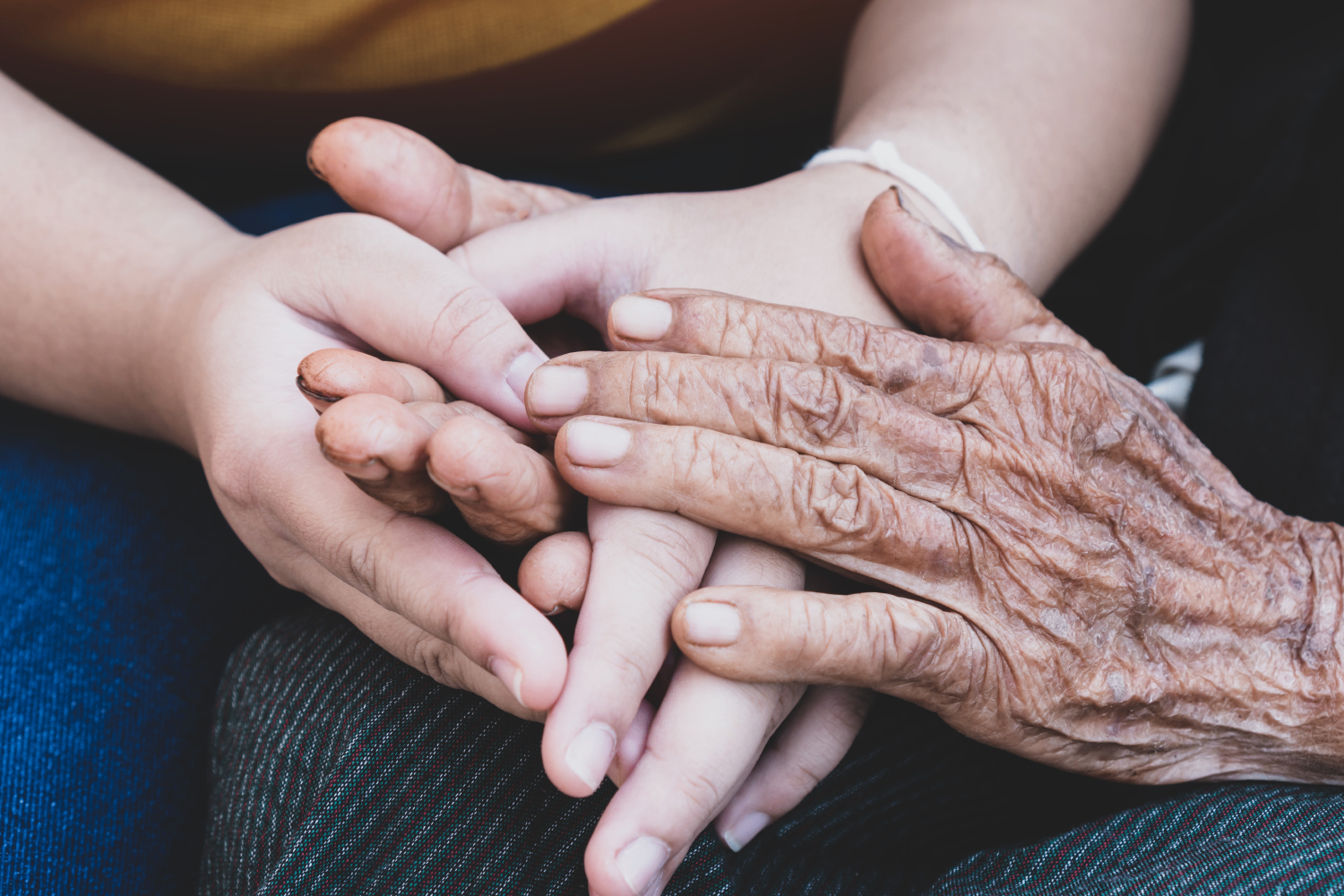
Dr. Eric Venn-Watson’s Highlights
It probably happens in your 40s — you wake up one morning and realize that getting out of bed doesn’t feel the same as it used to. You begin to notice your body feeling just a little tighter when you first open your eyes. It takes a few minutes for your body to “wake up.”
In your 50s, this feeling is more pronounced. Muscles get achy and sore even when you don’t feel there’s a real cause for it.
In your 60s, joints and bones ache, and it seems you just don’t have the same mobility you had even five years earlier.
These are all common complaints with getting older, but if we are proactive, we can help keep our body balanced, limber, supported, and thriving at any age.
One of the most beneficial practices that contribute to long-term strength, joint health, and flexibility is yoga.
Aging Muscles, Joints, and Bones
The aging body is stiffer than it was in its youth. Think of how children are able to twist and contort their bodies into positions that would send an adult to the emergency room. This is because the amount of lubricating fluid in the joints, called synovial fluid, decreases with age.
Along with less lubricating fluid in joints such as the hips, knees, and, ankles, aging bodies also have shrinking cartilage which can make movement painful. Inactive older adults have an even greater risk of losing cartilage, which can lead to injury or strain.
Age-related decreases in bone density and muscle also contribute to stiffness, pain, and increased risk of injury. After age 30, it’s common to lose muscle mass and even some muscle function. This process is called sarcopenia. Couple this with osteopenia—the yearly decline in bone mass that happens after age 50—and it’s easy to understand why injuries like breaks and fractures or even health conditions like osteoporosis or arthritis are so common among seniors.
The biggest risk that bone loss, muscle loss, and declining cartilage and synovial fluid place on the 65+ population is injury. Because it can be harder to recover from an injury when you are older, and because there is a higher chance of a senior having other health conditions that could hinder recovery, it’s important to stay as active as possible and take steps to prevent these age-related losses from happening as quickly.
How Yoga Can Help
Yoga is a bodyweight-bearing activity that involves stretching, balancing, and strengthening all parts of the body and mind through a sequence of physical postures. It is usually accompanied by focused breathing techniques, which can help increase lung capacity, breath control, and endurance. Meditation and relaxation practices that focus on clearing the mind can also help with mental clarity.
There are many types of yoga such as the higher-intensity vinyasa yoga, the deeply relaxing yin yoga, and hatha yoga, a gentle yoga well-suited to seniors' low-impact exercise needs.
Participants can tell their yoga instructors about any existing injuries or considerations before stepping onto their yoga mat to receive specialized modifications with their unique needs in mind.
The health benefits of yoga are helpful at any age, but for seniors, they are quite arguably necessary. Research shows that regular yoga practice is helpful for maintaining seniors’ cognition, promoting musculoskeletal preservation, and even supporting mood struggles like anxiety or depression.
1. Improved Cognitive Function
It’s a common complaint from older populations: “I don’t feel as sharp as I used to.”
It’s a normal part of cognitive decline that leaves us feeling like our central processing units need a little extra RAM.
Yoga helps improve cognitive function by helping you develop mind-body awareness, which in turn improves concentration and helps you stay attentive longer.
2. Helps Prevent Muscle Loss
It gets harder to build muscle after age 30, but it is absolutely possible. If your goal is simply to prevent the loss of muscle tone and volume that you already have, yoga can help.
Yoga uses bodyweight movement that engages virtually every muscle group in your entire body, strengthening them, using them, and helping to build them so they don’t shrink away with age.
Proof positive that you don’t have to lift a heavy barbell to stay toned and keep your muscles healthy.
3. Helps Prevent Bone Loss
Staying active and lifting weight is crucial for avoiding age-related bone loss, and yoga’s weight-bearing poses can help you keep your bones strong. Strong bones are a line of defense against fractures that can take months to heal when you are older.
Yoga postures are also helpful for bone and joint-related pain. By keeping your joints fluid and flexible, you keep pain levels lower and reduce your risk of feeling stiffness and tightness, which can drastically improve your quality of life.
4. Improves Mood
It’s no surprise that yoga can help improve mood. Volumes of research have been conducted on the mental benefits of daily exercise. However, it’s important to note that the mental improvement that yoga offers may be related to more than just physical movement.
Yoga focuses on meditative practices that are designed to help bring awareness to your thoughts, but also keep you present-minded and grounded, which can help yoga practitioners ease feelings of worry, stress, or hopelessness.
5. Improves Balance
We know we lose our balance and stability as we get older. Even the ability to walk up a flight of stairs becomes more difficult to do without the use of the handrail and/or someone else’s assistance.
Loss of balance and core strength can lead to injury, and can significantly impact a senior’s ability to care for themselves. The Centers for Disease Control and Prevention recommend strengthening and balancing exercises to decrease your risk of falling.
Yoga's postures help improve balance and coordination and strengthen the core muscles to help prevent injuries. Yoga poses also help facilitate better overall movement, which keeps you safer and better protected against slips and falls.
6. Yoga Helps Your Back
Back pain complaints start rolling in as early as our late 20s. Our backs support our bodies while seated and standing, and problems with the spine as well as the muscles that surround the spine can cause significant, debilitating pain.
Yoga stretches help keep the back moving and helps to alleviate pressure on the spine.
Yoga can also help improve posture thanks to the strengthening of the back muscles, which can come even with easier poses.
7. Helps Reduce Risk of Age-Related Illness
High blood pressure, excess weight, insulin resistance, and unhealthy cholesterol numbers are all associated with getting older. They’re so common, in fact, that many of us just assume developing them is a normal part of the aging process. They are not.
Age-related illnesses happen mainly because of poor diet and exercise habits, and bad lifestyle choices. Although genetics do play a role, we have the ability to keep ourselves healthy and reduce our risk of ever developing these conditions.
Practicing daily yoga can help support an active lifestyle, help you maintain a healthy weight, cholesterol, and blood pressure numbers, and keep you in a better state of health and wellness overall.
What Else Can I Do To Support Myself As I Age?
For the senior who wants to stay active, take care of their body, and avoid getting “old” just for the sake of getting old, there’s hope.
It’s entirely possible to age healthfully, instead of just aging.
Practicing yoga can be an integral part of a healthy diet and exercise routine that can keep you active and feeling more youthful and energetic.
The real issue with aging is what happens on the cellular level. Your cells begin to decline and lose their function with age. Each cell makes up tissues, that make up organs, that make up entire systems that run your body.
When our cells begin to stop functioning like they did when we were young, our body ages.
Elevate your cells. Elevate your self.
Cellular Support for the Aging Body: C15:0
You can support your cells and give them a fighting chance against aging with a supplement so simple it’s surprising.
Pentadecanoic acid (also known as C15:0) is a little-known fatty acid that a growing body of research suggests is the first essential fatty acid to have been discovered in over 90 years.†
C15:0 helps support your cells in two main ways:†*
1. By strengthening cell membranes. The cell membrane, or cell wall, is the protective structure that keeps the cell safe from pathogens and external stressors. As we get older, our cell walls become flimsy, making it easier for the cells to become damaged. C15:0 is a sturdy fatty acid that dives deep into the cell membranes to keep your cells protected and fortified.2. By boosting mitochondrial function. The mitochondria of our cells give them energy to carry out their functions, but those energy sources become sluggish over time, and with age. C15:0 helps increase mitochondrial function by 45%, which can keep your cells functioning like they did when you were much younger.
C15:0 helps support mood, appetite, sleep, and immunity, too.†* By binding to special receptors in the brain and body called PPARs that control these functions, C15:0 helps your body regain balance and homeostasis, helping you feel youthful and in line with yourself, even as more candles appear on your birthday cake.†*
If you want the benefits that C15:0 has to offer, the best solution is by taking the once-a-day, vegan version of it: fatty15.
Get Fatty
Fatty15 is the only supplement that offers pure, FA15™ in a once-a-day capsule form. Just 100mg a day is plenty to keep your cells supported and help you age on your own terms.* Unlike other fatty acid supplements, you won’t get a weird, fishy aftertaste, either.
Give your cells what yoga classes give to your muscles and joints — the ability to feel and function youthfully.
Fatty15 gives your cells the ability to stay younger and function better, so you can age how you want to.*
Sources:
Clinical definition of sarcopenia|NCBI
Science, Yoga, and The Aging Body: What Postures, What Practices?|Your Yoga Alliance.org
Ageing - muscles bones and joints|Better Health.vic.gov
Facts About Falls | Centers for Disease Control and Prevention

Eric Venn-Watson M.D.
CEO, Co-Founder
Senior Scientist, Co-Founder
Eric is a physician, U.S. Navy veteran, and Co-founder and COO of Seraphina Therapeutics. Eric served over 25 years as a Navy and Marine Corps physician, working with the special forces community to improve their health and fitness. Seraphina Therapeutics is a health and wellness company dedicated to advancing global health through the discovery of essential fatty acids and micronutrient therapeutics.
You May Also Like...
The Definitive Guide to Aging's Role in Human Longevity
Aging is a complex biological process impacting health and longevity, requiring a distinction between chronological age, biological age, and psychological age to understand its nuances
7 Proven Ingredients That Boost Anti‑Aging Benefits Naturally
The quest for healthy aging has evolved into evidence-based science, identifying specific nutrients that support cellular health and longevity.


